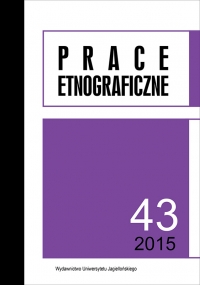Artefakty przeszłości jako ślady pamięci. Dziedzictwo kulturowe Aromanów na Bałkanach
Artifacts of the Past as Traces of Memory. The Aromanian (Vlachs) Cultural Heritage in the Balkans
Author(s): Ewa KocójSubject(s): History, Archaeology, Cultural history, Ethnohistory, Social history, Ancient World
Published by: Wydawnictwo Uniwersytetu Jagiellońskiego
Keywords: Aromanians/Vlachs; Balcans; cultural heritage; culture memory; symbolic places; churches and monasteries; icons; budownictwo; space organization; symbolic cities; multiculturalism and conflict
Summary/Abstract: The purpose of this article is to answer several questions: (1) What traces of the Aromanian (Vlach) tangible cultural heritage can be found in present-day Albania, Greece, and the Republic of Macedonia?; (2) What do such traces tell us about the local community and its history and significance in European culture?; (3) Is there today any Aromanian collective memory of the places where the traces of this heritage have been found? The article describes the regions which used to be inhabited by Aromanians, presents the initial criteria for the division of their cultural heritage into groups by attributing selected examples of historical monuments to this ethnos, and also indicates the selected meanings related to Aromanian culture which we discover when treating these monuments as the text of culture. I used qualitative field research methods, including photographic documentation, interviews, and participant observations linked with the traces of this heritage in selected villages of Greece, Albania, and Republic of Macedonia. The research also focused on the secondary (historic and ethnographic) sources as well as on resources available on the Internet – I analyzed the narratives about the relevant monuments in ethnographic sources (past and contemporary memories of Aromanians) published in the new media, including on blogs and websites. The analysis is based on the comparative historical paradigm and on the interpretative paradigm, which made it possible to study the hidden cultural meanings and codes related to the Aromanian heritage. The study showed that the Balkans is home to numerous Aromanian cultural heritage artifacts with which this ethnicity researchers associates different meanings (e.g. space organization, real and symbolic places, multiculturalism and conflict).
Journal: Prace Etnograficzne
- Issue Year: 43/2015
- Issue No: 4
- Page Range: 271-305
- Page Count: 35
- Language: Polish

